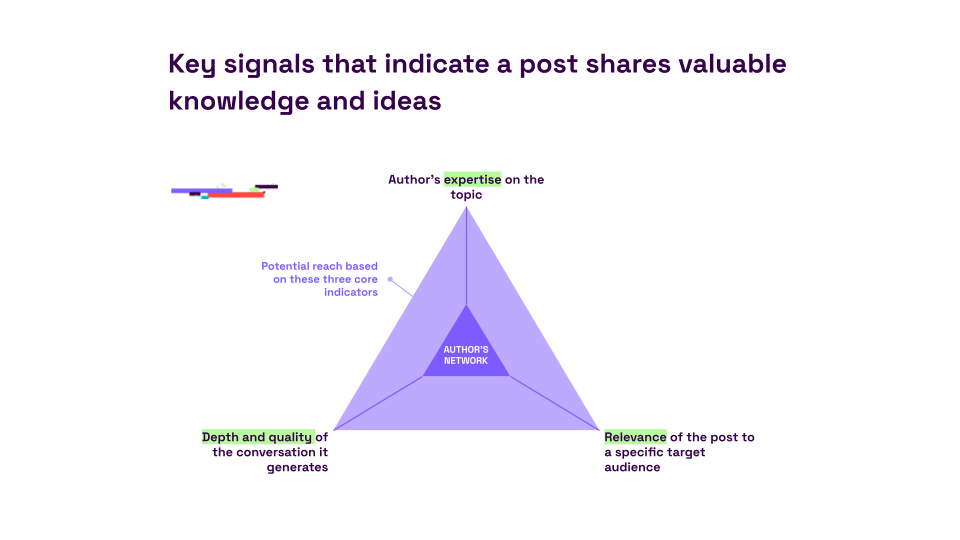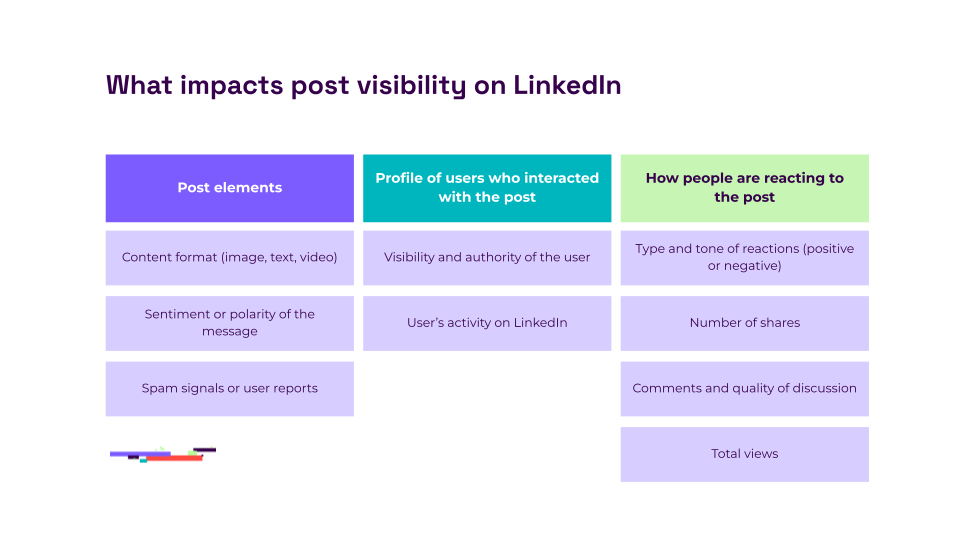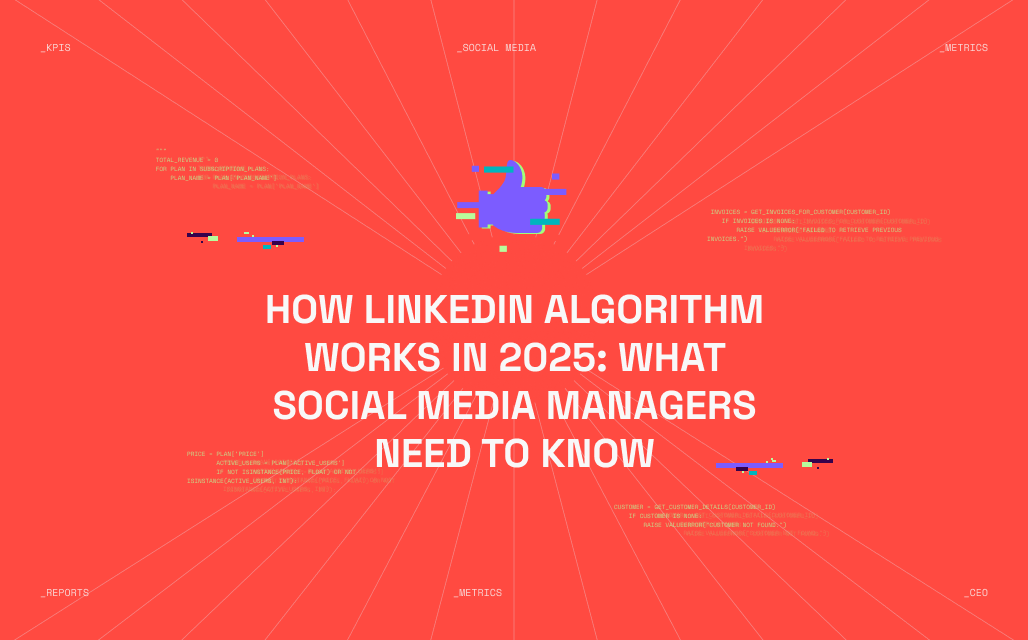LinkedIn's algorithm is designed to surface relevant, valuable, and high-quality content. It prioritizes posts that share unique insights rooted in the author’s personal experience and professional journey. But it’s not just about what you say, it’s also about how you say it, how you spark conversation, and how you engage with your audience.
So, how does the LinkedIn algorithm actually work?
LinkedIn uses classifiers to evaluate content quality both at the moment of publication and throughout the lifespan of a post. These signals help determine whether a piece of content should keep circulating and to whom.
This system combines artificial intelligence with human moderation across several key phases.

1. The moment of publication: content categorization
Right after you publish, LinkedIn applies an automatic quality filter in near real-time, assigning your post to one of three categories:
- Spam: violates LinkedIn’s guidelines (e.g., excessive links, irrelevant hashtags, poor grammar). These posts are automatically suppressed.
- Low quality: not technically spam, but unlikely to drive engagement. Visibility is limited.
- Valid or high quality: well-written, professional, and potentially valuable to the community. These posts have the highest chance of appearing in the feed.
If a post is flagged as spam or low quality, it may be reviewed by a human moderation team to verify whether it truly violates the platform’s standards.
2. Performance analysis: does your content deserve more reach?
LinkedIn doesn’t blast your post to your entire network all at once. Instead, it shows your content to a small subset of your audience first. If it receives early, consistent engagement such as comments, reactions, or dwell time, the algorithm boosts it to more people.
What counts as quality engagement?
- Comments that directly respond to the post’s content.
- Active conversations between users in the comments section.
- The author replying to comments on their own post.
- The profile and expertise of those who engage.
3. Real-time monitoring and user reports
If a post is reported by users, LinkedIn starts tracking it closely. If enough negative signals are received, it triggers a manual review to determine whether the content should be limited, removed, or deprioritized. This step helps LinkedIn respond quickly to issues that automation alone might miss, especially once a post is already gaining traction.
Key elements the LinkedIn algorithm considers
The content that performs best is the one that initiates meaningful conversations and provides real value to the community. Here’s what matters most:

LinkedIn especially values posts that encourage others to share their perspectives, sparking meaningful conversations around professional topics.
Interaction metrics
Not all engagement is treated equally. While likes, shares, reactions, and views all count, LinkedIn gives extra weight to meaningful comments that contribute substance. Posts that spark real conversations are prioritized. The algorithm also factors in negative signals like "Hide this post" or "Not interested," which can reduce visibility. And who engages matters: when users with strong profiles or industry expertise comment on a post, it adds more weight than a like from a casual scroller.
Content quality
Posts that are clearly written, insightful, and tailored to a professional audience perform best. The algorithm favors content grounded in first-hand experience or unique knowledge, as these tend to generate more trust and interest.
Your network & connection layers
Content is distributed in waves (1st, 2nd, and 3rd-degree connections) based on how the initial audience reacts. That means your reach doesn’t only depend on what you post, but also on who sees and engages with it.
Highly engaged users with strong networks can help your post go further. Network diversity also plays a role: broader industry representation, geography, and engagement habits can all increase amplification.
Bonus track: do links hurt reach?
One of the most frequently asked questions: does including an external link hurt the performance of a post?
According to Laura Lorenzetti, Executive Editor at LinkedIn, this is a myth. What really matters is content quality. She recommends adding links when relevant and helpful, but warns against using a post solely as a clickbait gateway to external content.
What drives visibility on LinkedIn
LinkedIn looks at a few key elements in your post to decide how far it should go and whether it has viral potential.

What to keep in mind when posting on LinkedIn
- High-quality content
- Active, two-way participation
- Posts that reflect the author's perspective and analysis
- Genuine professional relevance
- Content that encourages meaningful conversation, not just engagement for engagement’s sake
And most importantly: responding to comments isn’t optional, it’s part of the strategy.





.jpeg)



